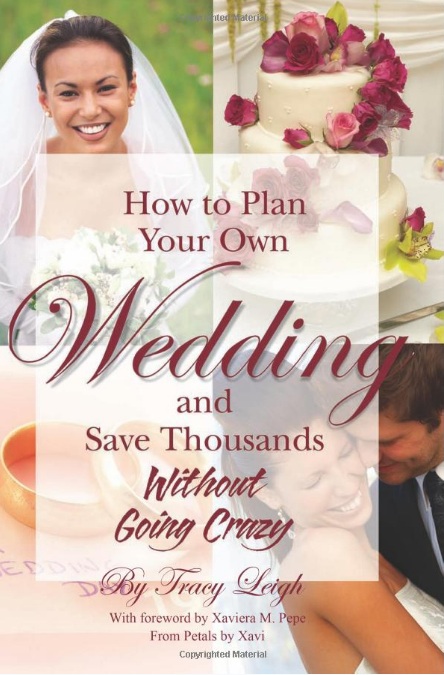 A lot has changed since 2008. For example, in 2008, people linked to about.com for actual information. What a strange world it was.
A lot has changed since 2008. For example, in 2008, people linked to about.com for actual information. What a strange world it was.
I picked up How to Plan Your Own Wedding and Save Thousands as part of my ongoing crusade to fully understand the challenges and frustrations facing the many engaged couples in and around my life.
I have to admit, I think I am growing a bitter distaste for my industry’s methods and I would like to dream up a better way. But more about that in some other post.
The book is broken up into 15 chapters, each covering a distinct part of your wedding, except for the final chapter which deals with the loose ends, like transportation and party favors.
- Budgets
- Vision
- Venue
- Clothing for the women
- Clothing for the men
- Invitations
- Flowers
- Decorations and Accents
- The Cake
- The Food
- Entertainment
- Rentals
- Photography & Video
- Everything else
Those are the chapter topics, stripped of their flowery wedding language.
There’s insight to be found here. For example, some couples don’t realize that a lot of venues prohibit the use of an outside caterer. Or that the caterer might require that they provide the liquor. There’s also some painfully dated stuff here–even for 2008. For example, in all of my time as a wedding photographer, I have never seen a DJ bust out the karaoke bar. Though if you’re doing this at your wedding, please give me a call.
Throughout the chapters of the book, the word “should” is thrown around a lot.
“A bride and groom should never hire a friend or family member as one of their vendors…”
“The color fabrics should be as close a match as possible…”
“All men in the ceremony should look uniform so they stand out from the other male guests…”
“Your bridesmaids bouquets should be smaller and more colorful than your bouquet…”
It’s not that I necessarily disagree with any of those particular “should” statements, at least as far as a wedding I were planning for myself is concerned. But instead, what continually stood out to me was the context of those should statements might be read under. If someone were to pick up the book, feeling nervous and overwhelmed by what feels like a million people’s expectations, the way this book uses should statements like these, could exacerbate that feeling further. And perhaps not coincidentally, lead to them spending more money for professional help they might not actually need.
“But the wedding is going to be formal, and aunt ruth is going to give me such a hard time if we don’t get the double matching, foil embossed wedding invitations!”
Aunt Ruth doesn’t care. And if she does, it hardly matters, because no matter what you do she won’t be paying attention to you actually getting married. She’ll just be off in her own mind naysaying something. If there are critical people in your life who do nothing to actually help you improve yourself, you just need to let them be critical. That’s their problem. Smile, nod and move on.
But this book doesn’t really lend much of that sort of balance. If my gut didn’t have a good feeling about the author’s intentions here, I might guess that much of this was written with the intention of steering people toward more expensive–albeit less cumbersome–options.
Although there is a lot of language that sounds as if its carrying a heavy wedding-industry bias, Leigh does give fair attention to various options. For example, although self-catering, for most people, is just not all that realistic (and perhaps is an easy place to convince people not to even try), the author spent a healthy chunk of text discussing the practicalities of pulling it off. The same is true for many of the other sections.
The chapter dealing with Wedding Photography–a specialty of my own–was surprisingly well written. While the DJ’s and entertainment section seemed like a relic of sorts, the photography section still shared quite a bit of information that is generally still true. I was particularly impressed that the author made the distinction between ‘raw’ and ‘finished’ photos (or negatives vs processed images as they’re more commonly referred to today).
In Conclusion
I wouldn’t recommend this book in a vacuum. But I think along side other wedding planning material, there’s a lot of pragmatism explained here and that’s definitely useful. But for couple’s perusing the pages, I would remind them that you don’t have to do a damn thing this book suggests, no matter how many times there’s a “should” in front of it.

Recent Discussion